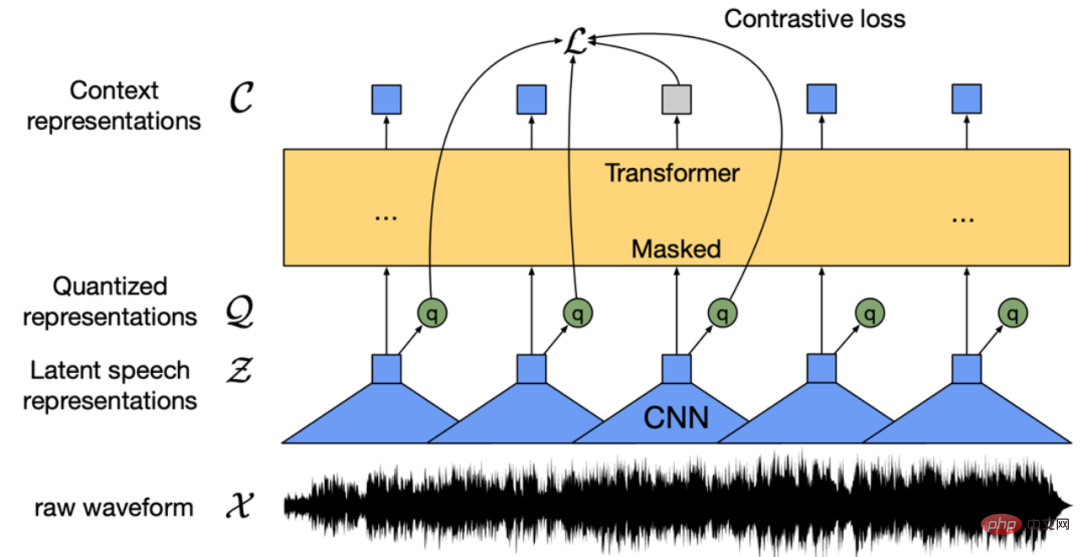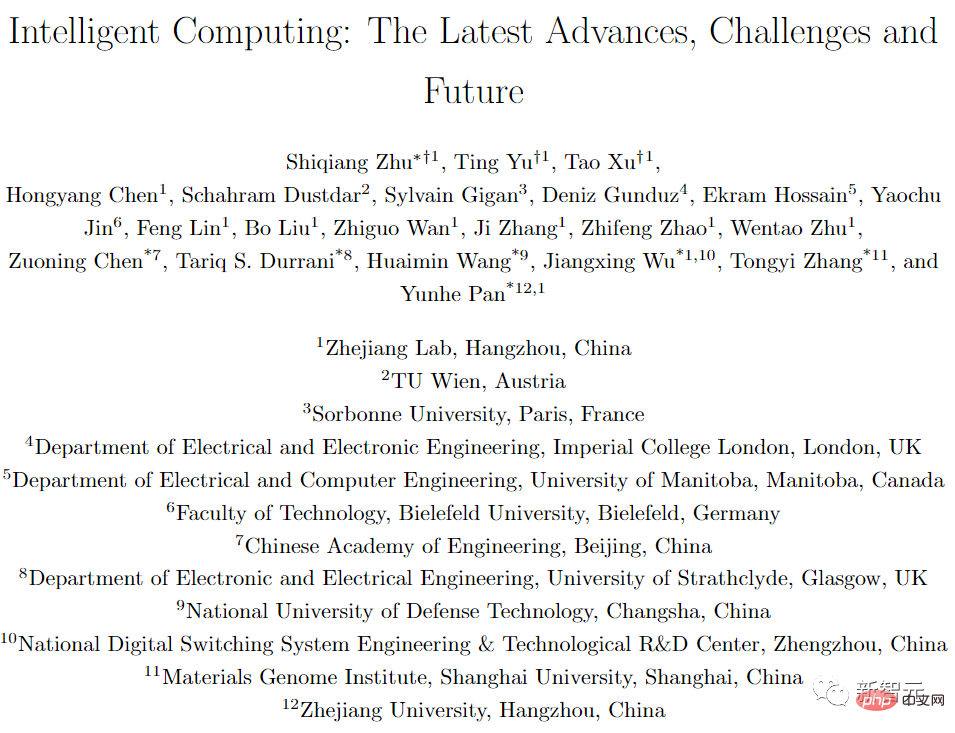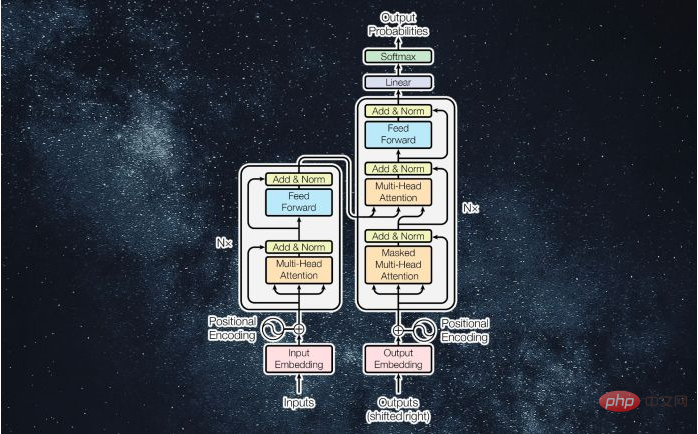 Technology peripherals
Technology peripherals AI
AI New MIT research shows that the cost of replacing human labor with AI is high, and only 23% of vision jobs can be replaced
New MIT research shows that the cost of replacing human labor with AI is high, and only 23% of vision jobs can be replacedWill artificial intelligence take away our jobs? If you watch Silicon Valley executives talk about today's cutting-edge AI technology every day, you might think the answer is yes, and it will happen soon.
However, recent research from the MIT Computer Science and Artificial Intelligence Laboratory (CSAIL) shows that visual AI still cannot completely replace humans, which gives us some comfort.

Paper address: https://futuretech-site.s3.us-east-2.amazonaws.com/2024-01-18 Beyond_AI_Exposure .pdf
Research shows that the pace of workforce automation may be much slower than we think.
Because - they are too expensive!
Visual tasks, AI is much more expensive than artificial intelligence
Researchers at MIT not only explored AI’s ability to perform tasks, but also Examined whether companies could replace humans in these tasks within the broader labor market and whether this would be economically beneficial.
Study found that while computer vision can already automate tasks that account for 1.6% of workers’ wages in the U.S. economy (excluding agriculture), only 23% of tasks that account for the entire economy’s wages 0.4%) are more cost-effective in terms of automation.
Moreover, the problem with visual AI is not only the small percentage, but more importantly, the cost is too high.

In the vast majority of cases, labor costs are cheaper than using automation.
Overall, the research results show that the scale of job losses caused by AI is huge, but this process is also gradual, so the government has room for restructuring policies and retraining to mitigate Effects of unemployment. ”
Scholars have studied tasks such as analyzing images of hospital diagnostic equipment, or checking whether a tray contains the correct items, which are visual tasks that can be achieved with today’s AI.

#But the authors point out that such tasks are often so scattered that automating them is simply not an economic consideration.
Although AI will bring some changes to the labor market, there is always time to adapt to it. They don't happen so fast that everything immediately goes into chaos.
Of course, this research only focuses on CV systems (systems that can identify and classify objects in images and videos), not more flexible systems such as GPT-4. Modal large language model.
OpenAI’s previous research shows that 19% of American workers feel affected by AI of the level GPT-4 in 50% of their work tasks.

This number is much higher than the MIT Research Institute's research on CV.
So, are MIT’s research results applicable to more general AI tools? It's still unknown.
MIT researchers have found that it can be prohibitively expensive for companies to "fine-tune" CV systems to make them suitable for specific specialized tasks.
Although such an investment may make sense for a large company, for a small company, it is not as cost-effective as a well-trained worker.
The key reason is that it does not mean that AI can complete a task, it is economically feasible.

In order to "fine-tune" the computer vision model, such as distinguishing specific types of pill bottles to achieve 99.9% accuracy, we need to collect Labeling images of a large number of different drugs is an expensive and cumbersome process, even if workers with low wages can be hired to complete the work cheaply.
Because then, we have to pay the massive computational cost of fine-tuning the AI model on massive data storage.
Can GPT-4 replace humans? Maybe it will be faster
But it is not clear yet that large language models also fit this situation.
However, fine-tuning a cutting-edge LLM to perform a specific task may only require a detailed list of written rules, which will be much easier than fine-tuning a CV model.
A study by OpenAI last August found that GPT-4 could effectively perform content moderation tasks when fine-tuned using detailed policy documents and several examples of tokens.
These findings suggest that large language models can be applied to a wider range of socioeconomic tasks faster and cheaper than computer vision models.
Currently, the fine-tuning of GPT-4 remains in restricted test mode, as OpenAI does not want to encounter any major security challenges.
 Paper address: https://llm-tuning-safety.github.io/
Paper address: https://llm-tuning-safety.github.io/
But with OpenAI and its Competitors are starting to allow customers to fine-tune models, and levels of automation may be achieved much faster than predicted in the MIT study.
In this regard, MIT researcher Thompson said -
"Of course, customizing LLM may be easier than customizing a computer vision system, so it will Greater adoption in economic practice.
#However, as long as the practice requires a small engineering team to integrate the system into the company's workflow, cost will still be a factor that cannot be ignored .”
It’s still far away from AI replacing us
For many companies, visual automation is not economically attractive. And this will continue for a long time.
MIT research points out that the cost of fine-tuning AI systems for specific tasks is too high, which is not cost-effective for small businesses.


For example, in a bakery, although the AI system can be used for food quality control (The time used accounts for 6% of the bakery’s working hours), but the high investment and maintenance costs of the equipment directly exceed the savings it can save.
In an interview with Time magazine, lead author Neil Thompson emphasized that although AI has the potential to have a significant impact on the job market, this day is still far away.
Now, the transition to automation through AI is not imminent, so it will not cause any panic and confusion. Policymakers also have an opportunity to take measures such as retraining.
Therefore, this article points out a key issue: Although many AI technologies have made people feel a sense of crisis, only by significantly reducing the deployment cost of AI and greatly expanding the scope of AI applications can we Only in this way can automation be more attractive to enterprises.

Antonin Bergeaud, associate professor of economics at HEC Paris, said that many scholars have now written articles like this to explore the impact of AI on the future labor market. , they use mostly publicly available metrics.
However, these estimates incorrectly rely on the assumption that if a job can be automated, it will be automated.
Bergeaud said that the research by these MIT scholars adopted a new perspective and carefully estimated the cost of implementing this technology, including the process from installation to maintenance.

Compared with the current labor costs in the United States, even if an artificial intelligence system is only as good as a human being, it is often very difficult to adopt it. expensive.
Therefore, the conclusion drawn from this study is also surprising. The proportion of the labor market facing the risk of automation is much smaller than we imagined.

Of course, there is a reason why AI causes so many people’s unemployment anxiety.
DeepMind Lianchuang warns: Within a few years, AI will impact the labor market
DeepMind co-founder Mustafa Suleyman previously warned that in the long run It seems that artificial intelligence is a tool that "fundamentally replaces labor."

Suleyman said at the World Economic Forum annual meeting, “We must seriously think about how to integrate these tools (AI). If we completely let the market dominate, Fundamentally, these tools will replace labor."
Current artificial intelligence mainly does two things:
The first is to improve It improves the efficiency of existing businesses and saves companies a lot of costs, but at the cost of replacing humans doing related work; secondly, it creates new businesses and processes, which actually contains opportunities to create jobs.
In the next few years, these two forces will have a huge impact on the labor market and cause unpredictable effects.
For more than a decade, experts have debated whether artificial intelligence will replace human workers.
Carl Benedikt Frey and Michael Osborne estimated in a 2013 study that 47% of U.S. jobs could be automated by the mid-2030s in the artificial intelligence boom.
A July McKinsey study found that nearly 12 million Americans will need to change jobs by 2030 as artificial intelligence replaces their roles.
In fact, Suleyman is not the only one who has warned against this.
In a Wired article published on January 10, MIT professor Daron Acemoglu predicted that artificial intelligence will disappoint everyone by 2024, proving that it is just A kind of “universal automation” in which AI will take away workers’ jobs but fail to achieve the expected dramatic gains in productivity.

“Everything of value in our world is created by our intelligence, our ability to reason about and predict information. And AI can do exactly that."
AI will start its own company within five years

In a previous panel discussion on artificial intelligence at the World Economic Forum, Suleyman was asked when AI would be able to pass the Turing test and even demonstrate human-like capabilities (AGI).
Suleyman said that the modern version of the Turing Test should be to evaluate whether AI can have the ability to manufacture and market products like entrepreneurs, project managers and inventors.
"I'm pretty sure that in the next five years, AI will not only have these capabilities, but these capabilities will be widely available at a very cheap price, and may even be open source, and this It will completely change the economy."
IMF Chairman’s voice: 40% of global jobs are affected by AI, but it is also a huge opportunity
And facing The International Monetary Fund also stated in its latest report that due to the impact of AI, nearly 40% of global employment will be affected.

Among them, 60% of jobs in developed economies will be affected, and in emerging markets and countries, this number is about 40%. In low-income countries, this dropped to 26%.
Among the jobs affected by AI, half will be negatively affected, and some will even disappear completely.
For the other half of the jobs, AI will bring more improvements in efficiency, and the income levels of workers who can embrace AI as soon as possible will also increase accordingly.

# Specifically, research shows that AI can help less experienced workers become more productive faster. Younger workers may find opportunities easier to take advantage of, while older workers may struggle to adapt.
If a similar situation develops further, it will soon polarize incomes: workers who can take full advantage of artificial intelligence will see increased productivity and wages, while those who cannot take advantage of artificial intelligence will see an increase in productivity and wages. For workers, productivity and income will drop significantly.
When this situation is mapped to the labor market, it will further intensify this differentiation: many jobs affected by AI technology will disappear, while the income of new jobs created by AI technology will Because of the scarcity of personnel, income will be relatively high.
This kind of macro judgment corresponds to developers and the AI industry. An obvious reality is that developers are becoming more and more worried about their career prospects.
Especially for developers who are new to the industry, because their work is relatively easy to be automated by AI technology, their labor demand will be reduced, and their income will also be affected.
But for algorithm engineers who develop AI technology, as well as many positions that will emerge with the Gen AI wave, their income and labor demand will continue to rise.
In response to the content of this report, Kristalina Georgieva, Chairman of the International Monetary Fund, said, "Artificial intelligence is indeed scary, but it is also a huge opportunity for everyone."

#And the IMF chairman’s statement was also hotly searched by netizens on Zhihu.
Indeed, it is difficult to reach a consensus on the impact of AI on employment and the labor market in a short period of time.
The above is the detailed content of New MIT research shows that the cost of replacing human labor with AI is high, and only 23% of vision jobs can be replaced. For more information, please follow other related articles on the PHP Chinese website!
 从VAE到扩散模型:一文解读以文生图新范式Apr 08, 2023 pm 08:41 PM
从VAE到扩散模型:一文解读以文生图新范式Apr 08, 2023 pm 08:41 PM1 前言在发布DALL·E的15个月后,OpenAI在今年春天带了续作DALL·E 2,以其更加惊艳的效果和丰富的可玩性迅速占领了各大AI社区的头条。近年来,随着生成对抗网络(GAN)、变分自编码器(VAE)、扩散模型(Diffusion models)的出现,深度学习已向世人展现其强大的图像生成能力;加上GPT-3、BERT等NLP模型的成功,人类正逐步打破文本和图像的信息界限。在DALL·E 2中,只需输入简单的文本(prompt),它就可以生成多张1024*1024的高清图像。这些图像甚至
 找不到中文语音预训练模型?中文版 Wav2vec 2.0和HuBERT来了Apr 08, 2023 pm 06:21 PM
找不到中文语音预训练模型?中文版 Wav2vec 2.0和HuBERT来了Apr 08, 2023 pm 06:21 PMWav2vec 2.0 [1],HuBERT [2] 和 WavLM [3] 等语音预训练模型,通过在多达上万小时的无标注语音数据(如 Libri-light )上的自监督学习,显著提升了自动语音识别(Automatic Speech Recognition, ASR),语音合成(Text-to-speech, TTS)和语音转换(Voice Conversation,VC)等语音下游任务的性能。然而这些模型都没有公开的中文版本,不便于应用在中文语音研究场景。 WenetSpeech [4] 是
 普林斯顿陈丹琦:如何让「大模型」变小Apr 08, 2023 pm 04:01 PM
普林斯顿陈丹琦:如何让「大模型」变小Apr 08, 2023 pm 04:01 PM“Making large models smaller”这是很多语言模型研究人员的学术追求,针对大模型昂贵的环境和训练成本,陈丹琦在智源大会青源学术年会上做了题为“Making large models smaller”的特邀报告。报告中重点提及了基于记忆增强的TRIME算法和基于粗细粒度联合剪枝和逐层蒸馏的CofiPruning算法。前者能够在不改变模型结构的基础上兼顾语言模型困惑度和检索速度方面的优势;而后者可以在保证下游任务准确度的同时实现更快的处理速度,具有更小的模型结构。陈丹琦 普
 解锁CNN和Transformer正确结合方法,字节跳动提出有效的下一代视觉TransformerApr 09, 2023 pm 02:01 PM
解锁CNN和Transformer正确结合方法,字节跳动提出有效的下一代视觉TransformerApr 09, 2023 pm 02:01 PM由于复杂的注意力机制和模型设计,大多数现有的视觉 Transformer(ViT)在现实的工业部署场景中不能像卷积神经网络(CNN)那样高效地执行。这就带来了一个问题:视觉神经网络能否像 CNN 一样快速推断并像 ViT 一样强大?近期一些工作试图设计 CNN-Transformer 混合架构来解决这个问题,但这些工作的整体性能远不能令人满意。基于此,来自字节跳动的研究者提出了一种能在现实工业场景中有效部署的下一代视觉 Transformer——Next-ViT。从延迟 / 准确性权衡的角度看,
 Stable Diffusion XL 现已推出—有什么新功能,你知道吗?Apr 07, 2023 pm 11:21 PM
Stable Diffusion XL 现已推出—有什么新功能,你知道吗?Apr 07, 2023 pm 11:21 PM3月27号,Stability AI的创始人兼首席执行官Emad Mostaque在一条推文中宣布,Stable Diffusion XL 现已可用于公开测试。以下是一些事项:“XL”不是这个新的AI模型的官方名称。一旦发布稳定性AI公司的官方公告,名称将会更改。与先前版本相比,图像质量有所提高与先前版本相比,图像生成速度大大加快。示例图像让我们看看新旧AI模型在结果上的差异。Prompt: Luxury sports car with aerodynamic curves, shot in a
 五年后AI所需算力超100万倍!十二家机构联合发表88页长文:「智能计算」是解药Apr 09, 2023 pm 07:01 PM
五年后AI所需算力超100万倍!十二家机构联合发表88页长文:「智能计算」是解药Apr 09, 2023 pm 07:01 PM人工智能就是一个「拼财力」的行业,如果没有高性能计算设备,别说开发基础模型,就连微调模型都做不到。但如果只靠拼硬件,单靠当前计算性能的发展速度,迟早有一天无法满足日益膨胀的需求,所以还需要配套的软件来协调统筹计算能力,这时候就需要用到「智能计算」技术。最近,来自之江实验室、中国工程院、国防科技大学、浙江大学等多达十二个国内外研究机构共同发表了一篇论文,首次对智能计算领域进行了全面的调研,涵盖了理论基础、智能与计算的技术融合、重要应用、挑战和未来前景。论文链接:https://spj.scien
 什么是Transformer机器学习模型?Apr 08, 2023 pm 06:31 PM
什么是Transformer机器学习模型?Apr 08, 2023 pm 06:31 PM译者 | 李睿审校 | 孙淑娟近年来, Transformer 机器学习模型已经成为深度学习和深度神经网络技术进步的主要亮点之一。它主要用于自然语言处理中的高级应用。谷歌正在使用它来增强其搜索引擎结果。OpenAI 使用 Transformer 创建了著名的 GPT-2和 GPT-3模型。自从2017年首次亮相以来,Transformer 架构不断发展并扩展到多种不同的变体,从语言任务扩展到其他领域。它们已被用于时间序列预测。它们是 DeepMind 的蛋白质结构预测模型 AlphaFold
 AI模型告诉你,为啥巴西最可能在今年夺冠!曾精准预测前两届冠军Apr 09, 2023 pm 01:51 PM
AI模型告诉你,为啥巴西最可能在今年夺冠!曾精准预测前两届冠军Apr 09, 2023 pm 01:51 PM说起2010年南非世界杯的最大网红,一定非「章鱼保罗」莫属!这只位于德国海洋生物中心的神奇章鱼,不仅成功预测了德国队全部七场比赛的结果,还顺利地选出了最终的总冠军西班牙队。不幸的是,保罗已经永远地离开了我们,但它的「遗产」却在人们预测足球比赛结果的尝试中持续存在。在艾伦图灵研究所(The Alan Turing Institute),随着2022年卡塔尔世界杯的持续进行,三位研究员Nick Barlow、Jack Roberts和Ryan Chan决定用一种AI算法预测今年的冠军归属。预测模型图


Hot AI Tools

Undresser.AI Undress
AI-powered app for creating realistic nude photos

AI Clothes Remover
Online AI tool for removing clothes from photos.

Undress AI Tool
Undress images for free

Clothoff.io
AI clothes remover

AI Hentai Generator
Generate AI Hentai for free.

Hot Article

Hot Tools

Atom editor mac version download
The most popular open source editor

mPDF
mPDF is a PHP library that can generate PDF files from UTF-8 encoded HTML. The original author, Ian Back, wrote mPDF to output PDF files "on the fly" from his website and handle different languages. It is slower than original scripts like HTML2FPDF and produces larger files when using Unicode fonts, but supports CSS styles etc. and has a lot of enhancements. Supports almost all languages, including RTL (Arabic and Hebrew) and CJK (Chinese, Japanese and Korean). Supports nested block-level elements (such as P, DIV),

SublimeText3 Linux new version
SublimeText3 Linux latest version

VSCode Windows 64-bit Download
A free and powerful IDE editor launched by Microsoft

ZendStudio 13.5.1 Mac
Powerful PHP integrated development environment





